Author: Darren Griffin
 Introduction Introduction
I first saw these black box in-car cameras in US taxicabs. Initially designed to protect the cab driver against assaults and theft, the windscreen mounted cameras pointed rearwards to capture the faces of every passenger.
Some time later the idea was adapted for use as a black box system with the camera pointed forwards to capture the drivers view. Acting in much the same way as the black box flight recorders in commercial aircraft the resulting data can be used for many purposes.
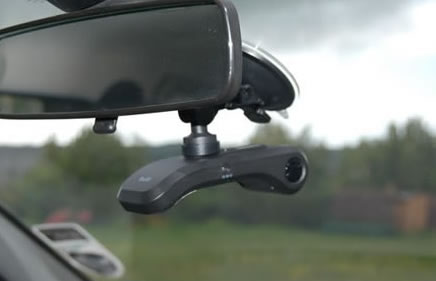 Roadhawk's RH-1 device reviewed here is one of these systems. The RH-1 adds a GPS for location logging and an SD memory card for easy access and expandable data storage. The beauty of the system is that it records continually to the memory card in an endless 'loop'. The length of the loop varies depending on the size of the memory card installed but a 2GB card (as supplied in the box) is sufficient for several days of video before it will start wiping the earlier files. Roadhawk's RH-1 device reviewed here is one of these systems. The RH-1 adds a GPS for location logging and an SD memory card for easy access and expandable data storage. The beauty of the system is that it records continually to the memory card in an endless 'loop'. The length of the loop varies depending on the size of the memory card installed but a 2GB card (as supplied in the box) is sufficient for several days of video before it will start wiping the earlier files.
Files are recorded in chunks of approximately a minute and so once the card is full it will start overwriting the earliest files. The supplies software allows viewing of the video together with a Google Map view of the vehicles actual location, speed and a G-Force sensor. The software records data in a proprietary format which can be read but not edited. As it is time and date stamped it is admissible in evidence.
A recent YouTUBE video shows another use for these devices, keeping an eye on your local garage! One owner found using an RH-1 caught them driving his Monaro in excess of 125mph when they were supposed to be servicing it, see here.
Installation
In the box you get the following:
- RH-1 camera unit
- Temporary suction mount
- Permanent 3m adhesive mount
- 2GB SD card
- DC power cable
- Cable clips
As ours is a loan unit we've used the suction mount but it's worth bearing in mind that using the supplied permanent mount will allow a lower profile installation than we achieved with the more bulky suction mount.
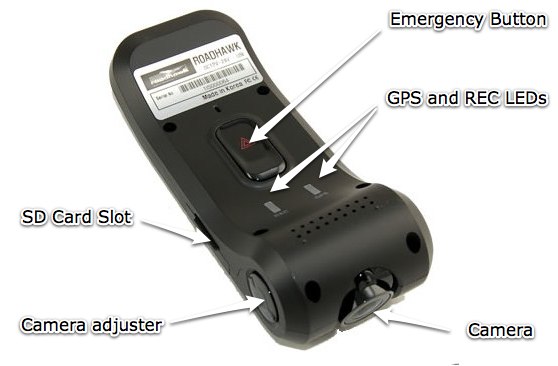
The DC power cable is long enough to run around the windscreen, down the pillar and into a fuse box with length to spare. helpfully, the RH-1 accepts 12v/24v directly so you can simply chop off the supplied cigarette lighter plug if you wish to hard wire to a fused 12v or 24v supply.
Cable clips are supplied but I managed to tuck the cable away behind trim without needing them.
The RH-1 auto-powers on with the ignition (if connected to an ignition controlled power supply).
The lens itself can be adjusted for elevation on the unit itself and so some time experimenting and reviewing the recorded video is advised before settling on the ideal position.
In use
When the ignition is switched on, the LED REC status light on the bottom of the unit will illuminate and a short beep will be heard. The blue GPS LED will illuminate once a GPS fix has been acquired (normally within 20secs).
The camera lens (1.3MP) has a wide 120deg view and records at 30fps using default settings. These can be changed trading quality for length of recording etc using the viewing software.
There are two main modes to the recording set-up, continuous recording with all video and event data saved to SD card and incident only recording. In the latter mode, the unit records continually but only saves data where an event has been triggered by the shock sensor.
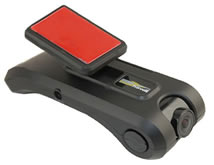 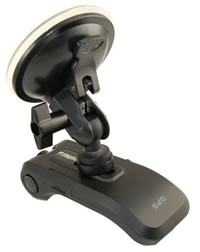
The permanent fit mount on the left and the temporary fit suction mount on the right
The system is supremely easy to use as it should be for a device intended to operate every time you get in the car. It requires zero user input once installed and will hopefully only ever require further attention in you wish to review an incident.
We chose to use the continuous record/save operation mode for our review, allowing us to playback an entire journey via the software.
Software
The supplied software (PC Only) installs direct from the SD card supplied with the device which is a novel solution and ensures you always have the application to hand.
Once installed you can open any of the files recorded, play them back at slow/normal/high speeds and review the shock, speed and location data. The video quality is good, more than adequate for reading car number plates and the wide field of vision the lens provides a great view.
The software also allows you to export video to .avi format.
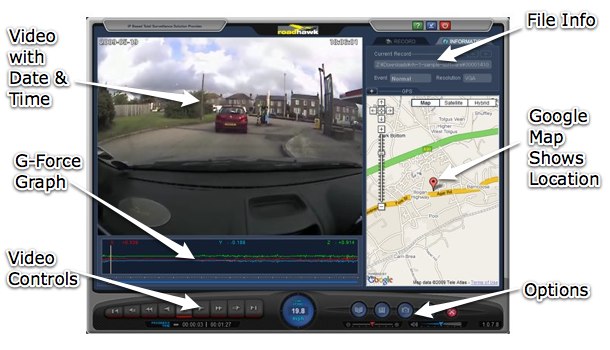
Recording Times
Recording time will vary based on many factors. Because vide is compressed, the level of detail in the image and movement etc will have a bearing on recording time but the following tables give an idea of the recording times you can expect in use.
| |
2GB SD Card @12fps |
| |
QVGA |
VGA |
| Rough |
5.28hrs |
4.41hrs |
| Standard |
4.47hrs |
4.3hrs |
| Fine |
4.05hrs |
3.95hrs |
| |
2GB SD Card @25fps |
| |
QVGA |
VGA |
| Rough |
4.8hrs |
4.19hrs |
| Standard |
3.68hrs |
3.49hrs |
| Fine |
2.82hrs |
2.76hrs |
QVGA - 320x240, VGA - 640x480, MEGA - 1280x960. The RH-1 is SDHC compatible and will accept cards up to 32GB capacity.
Conclusion
Roadhawk's system is well made, compact and works really well. The unit is easy to install and small enough to fit behind the rearview mirror without causing a distraction. The camera and GPS offer high quality data and we were very impressd with the captured video quality.
The software is simple to use and easy to understand. Being a Mac user it is a shame that it is support for other operating systems is not available but this product is far from unique in that respect.
The only criticism I would make is that the files are not themselves date time coded so it can make locating a particular point in a journey or a days driving difficult amongst a long list of captured video files. |